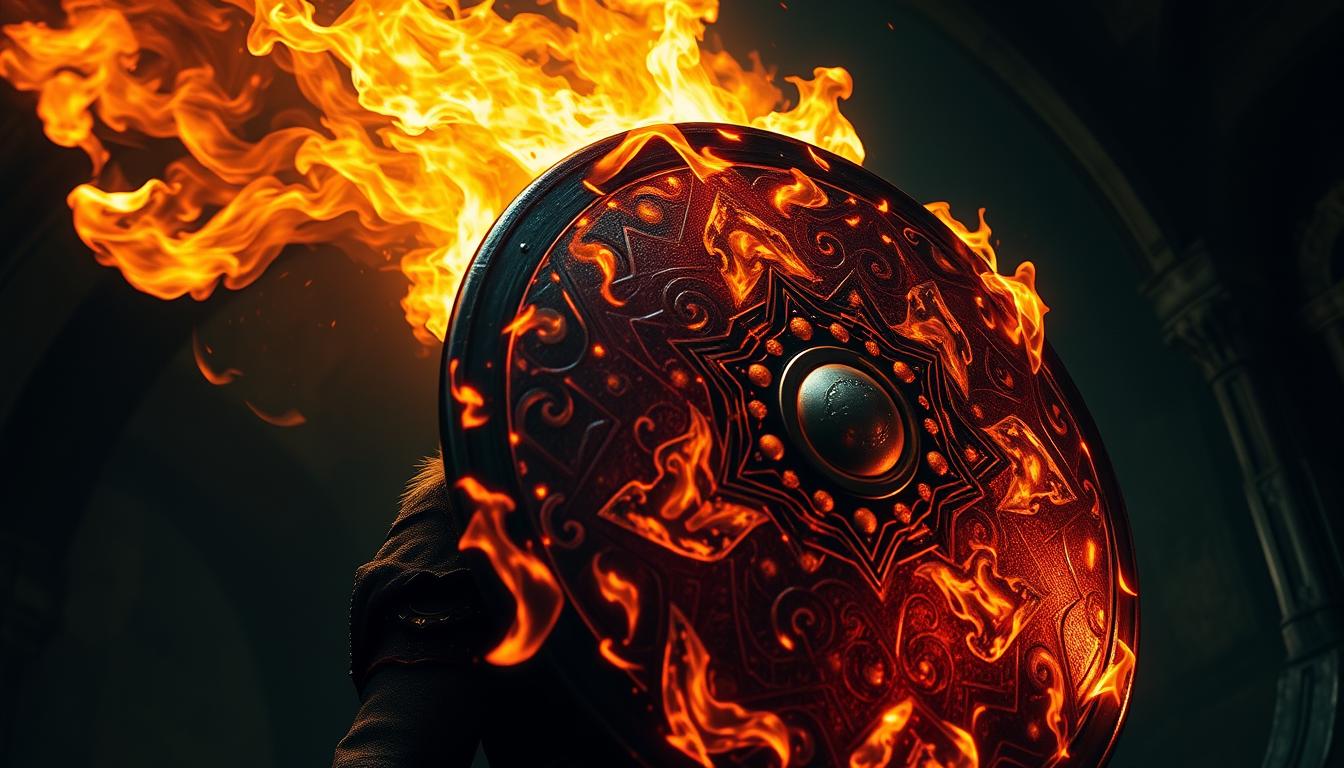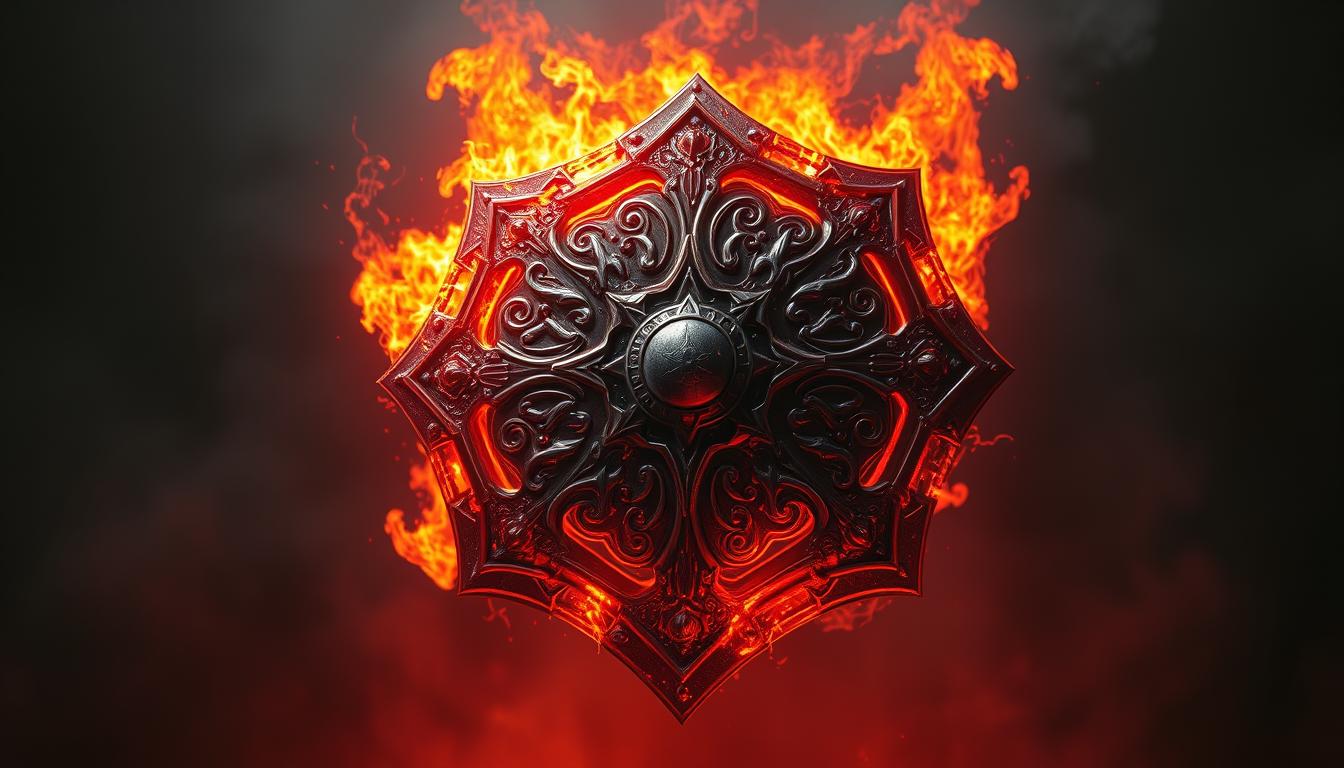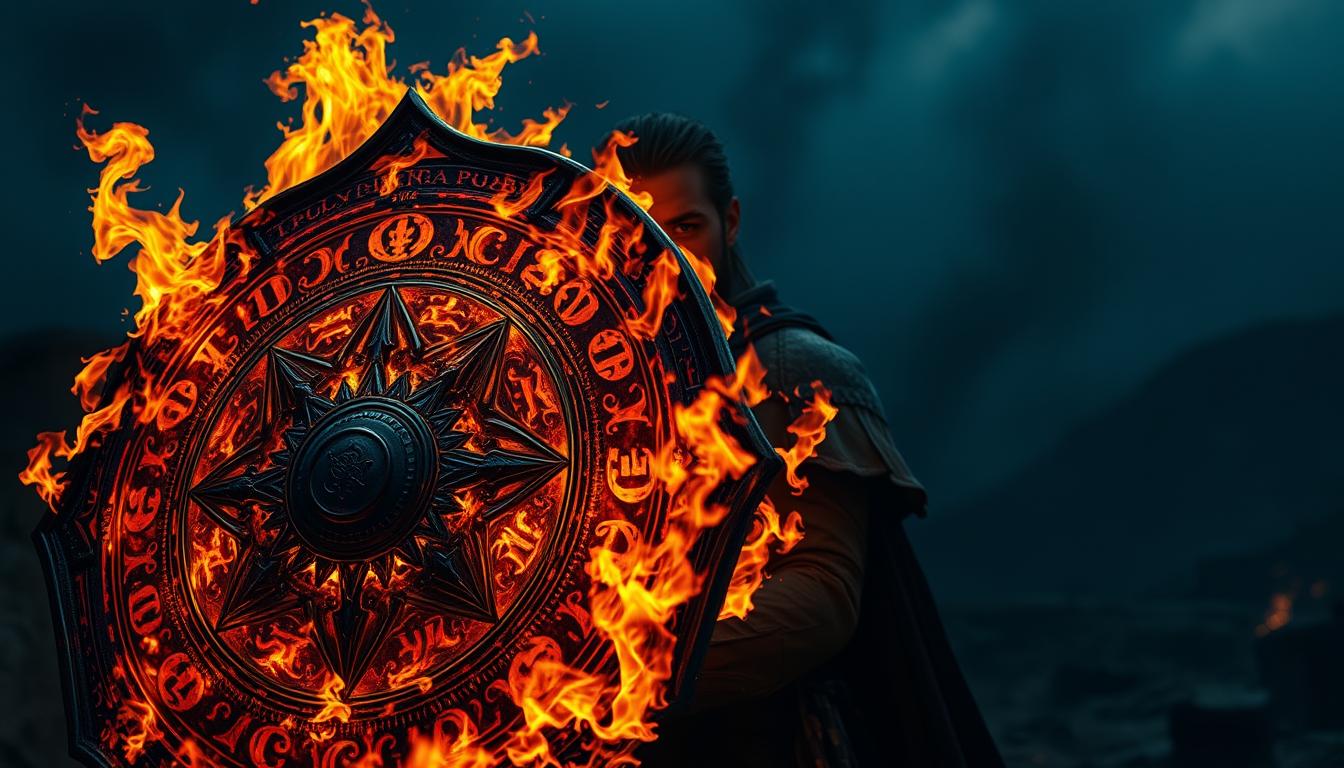I Used Fire Shield 5e to Boost My D&D Gameplay

I tried the spell at my table to see how it changes my survivability and playstyle. I treat it like a tested tool: cast on myself, runs for about 10 minutes, and does not steal my concentration. That freedom lets me keep a control or utility effect active at the same time.
I explain how I toggle warm or chill resistance and why the opposite-type on-hit damage makes foes think twice before a melee attack. In practice, the returned damage triggers when a creature hits me with a weapon, and there is no saving throw to negate it. That consistency means the spell scales well as I level up.
I’ll share a clear example of baiting a monster into striking me and how that extra damage let me hold a pocket in combat. I’ll also compare this pick to similar spells so you can decide if it fits your build and table meta.
Key Takeaways
- This is a 4th-level, self-only option that frees your concentration for other effects.
- Pick resistance to force opposite-type damage and punish melee attackers.
- No saving throw makes the damage reliable across rounds.
- Best against creatures weak to the opposite element; less useful versus immunities.
- I use it situationally—great mid-level pick, not a universal daily slot.
My Hands-On Take: Why This Spell Changed How I Survive and Strike Back
Using this spell felt like adding a passive weapon to my toolkit. I kept my concentration on a control effect while the effect ran for its full 10 minutes. That meant I could hold crowd control and still punish anyone who chose to come close.
The package is straightforward: self-cast, no concentration, resistance selection, and 2d8 opposite-type damage when a foe lands a hit melee attack. Because there’s no saving throw, the returned damage is reliable and stacks across multiple attacks.
In play, I stepped forward a few feet to bait an attacker and then let my frontline finish the job. In a lava-filled corridor I picked the warm shield and halved incoming fire damage while sending cold damage back to the creature that struck me.
- I could count on steady points of damage without extra actions.
- Multi-attack foes multiplied the payoff each time they hit.
- It rewarded aggressive positioning without turning me into a melee weapon wielder.

Fire Shield 5e: What It Does, How It Works, and Where It Shines
Let me walk you through the core rules so you know when to pick warm or chill and what to expect at the table.
Core mechanics at a glance
Level and casting: It’s a 4th-level evocation I cast on myself with one action. The spell lasts 10 minutes and does not require concentration.
Warm vs. chill
On casting, I choose resistance to either fire or cold. Choosing warm shield grants cold damage return, while the chill option returns fire. That choice directs what attacker takes when they hit me.

Melee hits and table rulings
The effect triggers only when a creature lands a hit melee attack. The attacker takes a flat 2d8 with no saving throw, so the returned damage is reliable.
- Most DMs rule melee weapon and many melee spell attacks trigger it.
- Edge cases like spiritual weapon vary; ask your DM before relying on it.
| Feature | What it does | Play note |
|---|---|---|
| Duration | 10 minutes, no concentration | Free up concentration for other spells |
| Retaliation | 2d8 opposite-type damage on hit melee attack | No saving throw; predictable returns |
| Resistance choice | Warm or chill option | Pick based on monsters’ resistances |
How I Play It: Builds, Combos, and Alternatives to Consider
I treat this spell as a tactical tool: it changes how I position and who I invite to swing at me.
Best use cases: I cast warm shield when I expect cold damage, and I pick the chill option when a wave of flame lies ahead. In volcano lairs or against salamanders and red dragon minions, the resistance plus automatic return damage matters more than a tiny AC bump.
I avoid relying on the returned damage versus devils and demons that resist cold or are immune to flame. In those fights, the resistance still helps, but I don’t expect the retaliation to swing the encounter.

Comparisons and combos
Versus Protection from Energy, I pick this when I want damage back and no concentration risk. Protection is better when I must cover allies or need types like acid or lightning.
Compared to Stoneskin, this spell doesn’t cost 100 gp or concentration. Stoneskin beats mundane weapon hits, so I choose it when nonmagical weapons are the main threat.
I often stack Armor of Agathys with this. Temp HP soaks hits while both effects punish a melee attack. Together they make attackers pay and keep me alive longer.
Positioning and timing
- I step just inside reach to bait one reliable attacker, then use my action elsewhere while the shield dishes out points of damage.
- Polearm reach still triggers the effect on a hit melee attack, so I use choke points to control who gets to swing.
- I cast before opening a door or when traps telegraph cold or flame; the lack of a saving throw for the return makes plans simpler.
| Option | How it helps | Play note |
|---|---|---|
| This spell | Resistance + 2d8 return on hit | No concentration; good for punishing melee weapons |
| Protection from Energy | Resistance to many types, can target others | Requires concentration; broad coverage for allies |
| Stoneskin | Resists nonmagical weapon damage | Costs 100 gp; concentration; better vs common weapon attacks |
| Armor of Agathys | Temp HP + cold damage to attackers | Stacks well; upcast gives big returns against melee |
Conclusion
In short, I favor this spell when I plan to stand my ground and make attackers pay each time they land a hit.
The effect gives self-only resistance for 10 minutes with no concentration, and it returns 2d8 opposite-type damage on each melee hit. That steady damage is reliable because there’s no saving throw to negate it.
I pick this option over Protection from Energy or Stoneskin when I want a low-footprint defensive layer and modest retaliation. It stacks well with Armor of Agathys to punish a weapon attack and turn every hit into a cost for the attacker.